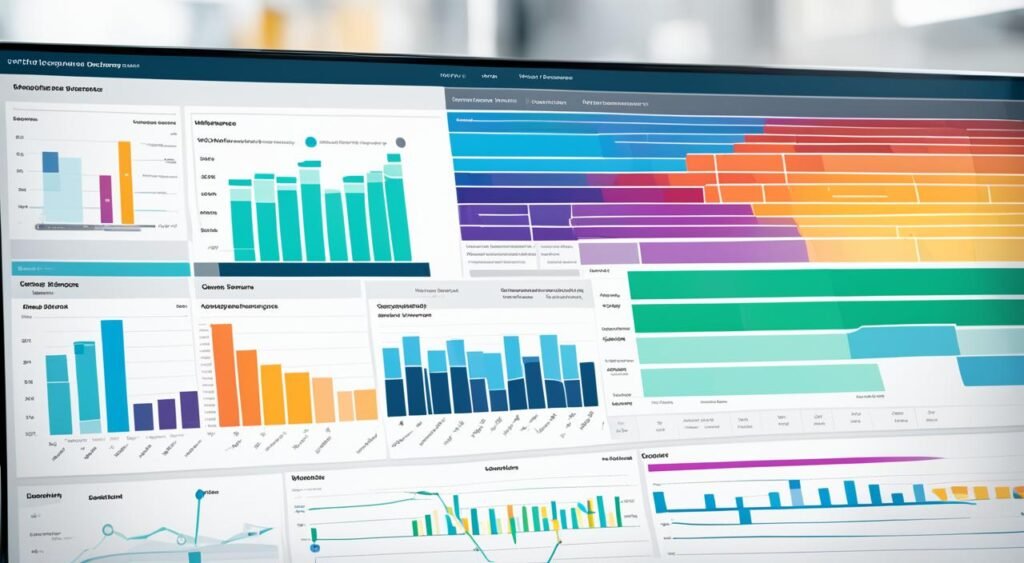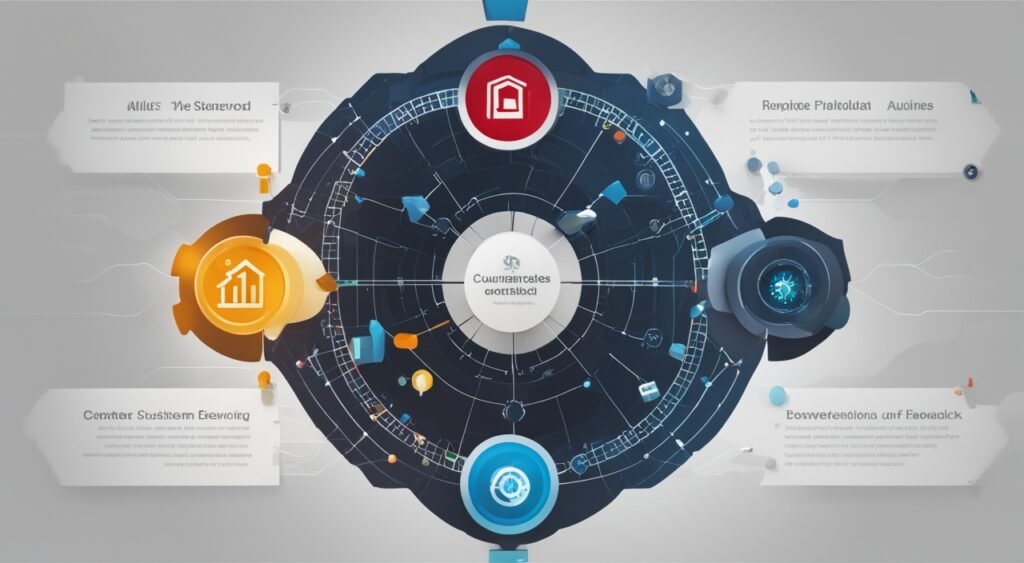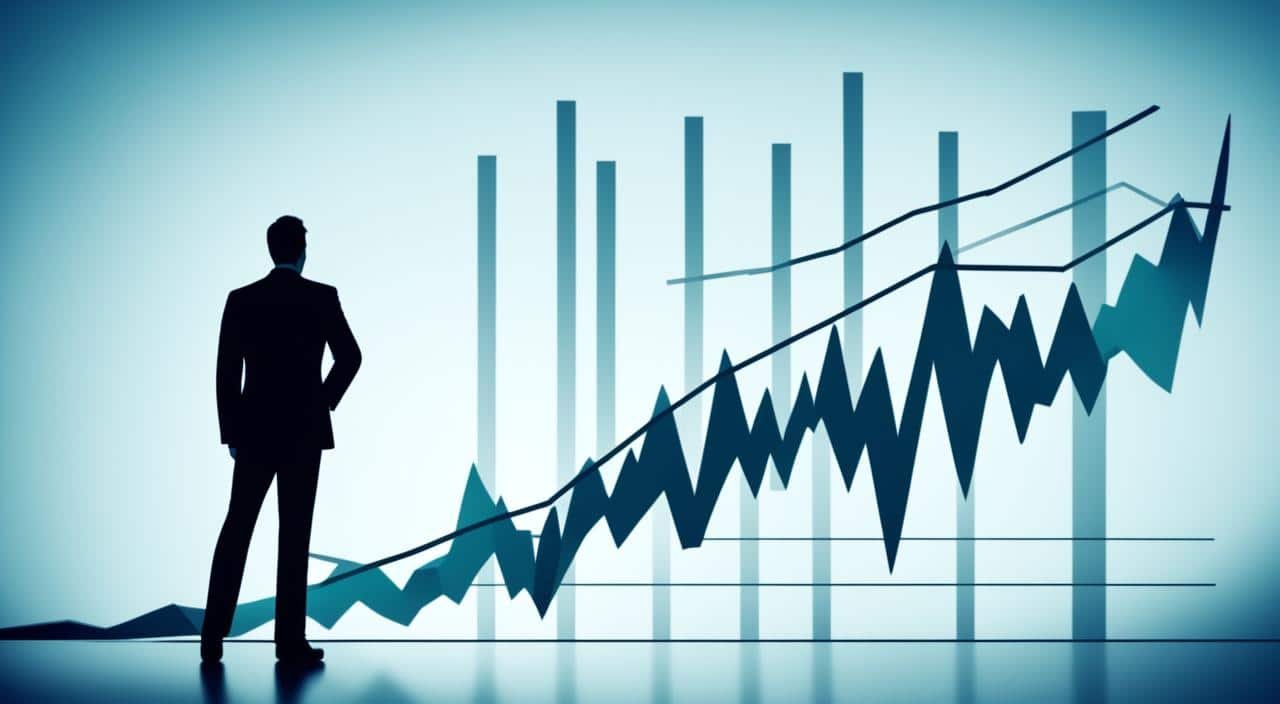In today’s world, business analytics is key for companies wanting to make smart choices and grow. It’s about looking closely at data to find important insights, spot trends, and guess what might happen next. By using data analytics, companies can learn more about how they work, what their customers like, and what’s happening in the market. This helps them make better decisions.
Also Read: What Are The Admission Requirements For Stanford University?
Business analytics is very important. With companies creating and collecting lots of data, it’s crucial to have people who can understand and make sense of it. A study by MicroStrategy found that companies use data to get better at what they do (64%), make smarter choices (56%), and do financially better (51%). Also, 65% of companies worldwide plan to spend more on analytics, showing how valuable data-driven insights are.
Learning about business analytics can really help your career. It lets you back up your ideas and suggestions with solid data. Business analysts and data scientists who are good at analytical and data management skills are wanted in many fields, like making supply chain better or predicting what customers will do. Knowing business analytics well can make you more powerful in your job and help make better business decisions.
Key Takeaways
- Business analytics is the systematic analysis of data to uncover insights, identify trends, and predict future outcomes.
- Companies are increasingly using data to improve efficiency, make more effective decisions, and drive better financial performance.
- Mastering business analytics can be a powerful career-advancing tool, as it enables professionals to support their arguments and recommendations with data-driven evidence.
- Business analysts and data scientists with strong analytical and data management skills are in high demand across industries.
- By understanding the principles of business analytics, individuals can enhance their influence within an organization and contribute to more informed business decisions.
Introduction to Business Analytics
Business analytics is a key tool for companies to make smart choices. It uses numbers and data analysis to understand past data, spot trends, and predict what will happen next. This helps businesses stay ahead and adjust to changes in the market.
Also Read: How Does Biotechnology Improve Medical Tests?
Definition and Overview
Business analytics turns raw data into useful insights. It uses stats, predictive models, and more to find hidden patterns and understand what drives success. This helps companies improve their strategies and operations.
The main ways to do business analytics are:
- Descriptive analytics – Looks at past data to find trends and patterns
- Diagnostic analytics – Finds the reasons behind past events or results
- Predictive analytics – Uses stats to guess what will happen next
- Prescriptive analytics – Offers advice on the best actions to take
These methods can be used alone or together, based on what a business needs and the data it has. By using business analytics, companies can better understand their operations, improve customer experiences, and make choices based on data.
“Business analytics is the art and science of transforming data into insights for making better decisions.”
| Analytical Method | Description |
|---|---|
| Descriptive Analytics | Analyzes historical data to identify patterns, trends, and key performance indicators |
| Diagnostic Analytics | Determines the root causes of past events or outcomes |
| Predictive Analytics | Forecasts future outcomes based on statistical models and machine learning algorithms |
| Prescriptive Analytics | Recommends the best course of action or decision based on testing and optimization |
The Evolution of Business Analytics

The history of business analytics goes back to the early days of computing and automation. Businesses have always looked for ways to work better and make smarter choices. As technology got better, so did business analytics, opening up new ways to see things.
Also Read: How Does The Admissions Process At Harvard University ?
The history of business analytics has several key stages:
- At first, businesses used manual data collection and basic reports to track their performance. This was hard work and didn’t offer much analysis.
- Then, information technology and computers changed everything. Companies could handle lots of data better and analyze it too.
- The growth of the internet and digital data made business analytics even more powerful. Companies could now get real-time insights from customers, market trends, and their own data.
- Recently, advancements in business analytics have come from new tech like artificial intelligence and machine learning. These tools help with predicting trends, recognizing patterns, and making decisions automatically.
Now, business analytics is key for all kinds of businesses. It helps them make better choices for the future. The field keeps getting better, with new tech like big data, internet of things, and cloud computing making business analytics even more powerful.
“The goal of business analytics is to turn data into insights, and insights into action.”
Types of Business Analytics Techniques

Business analytics is a wide field that uses different methods to collect, analyze, and understand data. These methods are divided into four main types: descriptive analytics, diagnostic analytics, predictive analytics, and prescriptive analytics. Each type has its own purpose and gives unique insights to help make better decisions.
Also Read: Which Is The Best University Campus In USA ?
Descriptive Analytics
Descriptive analytics looks at what has happened in the past or now. It answers “What happened?” by summarizing past data. This helps businesses understand how they’re doing, spot trends, and see the big picture of their work.
Diagnostic Analytics
Diagnostic analytics digs into the “why” behind past or current performance. It finds out the reasons and causes behind an organization’s successes or problems. This way, businesses can make smarter choices and fix the root of issues.
Predictive Analytics
Predictive analytics uses statistical models and machine learning to forecast what will happen next. It answers “What might happen?” by looking at data patterns to predict future events. This helps businesses get ready for what’s coming, reduce risks, and grab new chances.
Prescriptive Analytics
Prescriptive analytics is about suggesting what actions to take next. It answers “What should we do?” by using algorithms and tools to find the best actions. This type of analytics helps businesses make choices based on data and goals, leading to better results.
The business analytics process starts with collecting data, then analyzing and using the insights to improve. By using these four types of analytics, companies can understand their past, present, and future. This helps them make smarter, more strategic decisions.
“The goal of business analytics is to turn data into information and information into insight.” – Carly Fiorina, former CEO of Hewlett-Packard
Also Read: How Can The University Library Improve Academic Success?
Applications of Business Analytics

Business analytics is a powerful tool used in many industries and business areas. It helps make supply chains more efficient and improves how companies talk to customers. This tool changes how businesses work and makes things better.
Business analytics is key in managing supply chains. It looks at data on stock levels, how suppliers do, and logistics. This helps companies find problems, manage stock better, and make their operations smoother. This leads to saving money and making customers happier.
Another big use of business analytics is in customer relationship management (CRM). By looking at customer data, companies learn about what customers like and what they don’t. This lets them offer personalized services, improve customer experiences, and build stronger loyalty to their brand.
In finance, business analytics helps with risk assessment, fraud detection, and making smart investment choices. By studying past data, financial groups can predict market trends and avoid risks.
The manufacturing sector also benefits a lot from business analytics. By analyzing production data, manufacturers can find ways to improve, use resources better, and control quality. This makes them more efficient and profitable.
In sports, business analytics is changing the game. Teams and sports organizations use data to create winning strategies, improve player performance, and engage fans better.
Across different industries and uses, business analytics is a key tool. It helps make operations more efficient, improves customer experiences, and guides strategic decisions. As companies use more data, the uses of business analytics will grow and change.
“Business analytics is not just about crunching numbers; it’s about transforming data into actionable insights that drive tangible business outcomes.”
How Business Analytics Works

Business analytics turns raw data into insights that help make better decisions. It starts with a small sample of data. Then, tools and techniques are used to find patterns and trends.
The business analytics process has several key steps:
- Data Collection: Gathering data from different places, like inside the company, outside databases, and market research.
- Data Preparation: Cleaning and organizing the data for analysis.
- Exploratory Data Analysis: Using stats and software to spot patterns and trends.
- Model Building: Creating models to predict future trends.
- Interpretation and Reporting: Turning insights into clear advice for the company.
The business analytics process keeps going back and forth. Analysts ask new questions, improve the analysis, and try different scenarios. This way, companies turn data into insights that help make better decisions and work more efficiently.
| Key Steps in the Business Analytics Process | Description |
|---|---|
| Data Collection | Gathering relevant data from various sources |
| Data Preparation | Cleaning, organizing, and transforming raw data |
| Exploratory Data Analysis | Identifying patterns, correlations, and anomalies |
| Model Building | Developing predictive models and algorithms |
| Interpretation and Reporting | Translating insights into actionable recommendations |
By following this step-by-step process, companies can make valuable insights from raw data. These insights help with strategic decisions and improve how things work.
Importance and Benefits of Business Analytics
In today’s world, business analytics is key for companies wanting to stand out. It turns data into insights that help improve operations, understand customers better, and make smarter choices.
Driving Operational Efficiency
Business analytics tools give companies a clear view of their data. This lets them make processes better, find areas to improve, and use resources wisely. By making decisions based on data, companies can work more efficiently, cut costs, and boost productivity.
Enhancing Customer Understanding
Business analytics helps companies know their customers better. By looking at how customers act, what they like, and what they say, companies can make products and marketing that fit their needs. This approach can make customers more loyal, satisfied, and willing to spend more.
Enabling Informed Decision-Making
Business analytics gives companies the tools and insights for better decision-making. It helps predict market trends, reduce risks, and find new chances. Making decisions based on data leads to strategies that are more strategic and effective, driving success and profits.
In conclusion, business analytics is very important. It helps companies work better, understand customers, and make smart choices. This leads to being more competitive and sustainable in the long run.
Business Analytics vs. Related Concepts

In the world of business analysis, it’s key to know the differences between business analytics, business intelligence, data analytics, and data science. These terms might sound similar, but they each have their own special meanings and uses.
Business Intelligence vs. Business Analytics
Business intelligence (BI) uses past and present data to spot trends and patterns in a company’s work. Business analytics goes deeper, trying to figure out why things are the way they are. BI is all about looking back, while business analytics looks ahead to help make better decisions.
Business Analytics vs. Data Analytics
Data analytics is about digging into data to find insights and make smart choices. Business analytics is more focused on solving specific business problems using data. It aims to help a company grow and do better.
Business Analytics vs. Data Science
Data science uses advanced stats to explore data, letting the data itself guide the study. Business analytics is more about using data to make informed decisions for business goals.
Knowing these differences is key for companies wanting to use data and analytics well. By understanding what each concept does best, businesses can make the most of their data strategies and find new ways to succeed.
Common Challenges in Business Analytics
Starting a successful business analytics plan is hard for companies. One big issue is dealing with too much data from different sources. This makes it hard to put all the data together smoothly.
Another big problem is not having enough staff with the right skills. Business analytics needs people who are good with data, can interpret it, and make smart decisions. Finding these people can be tough for many companies.
Also, there are limits to how much data you can store and process. As data gets bigger and more complex, companies need strong tech to keep up. If not, their insights might not be accurate or timely.
To beat these challenges, companies need a full plan for business analytics. They should invest in good data management, build a data-driven culture, and train their staff. By doing this, businesses can make the most of analytics. This leads to better decisions, more efficient operations, and growth that lasts.
“The biggest challenge in business analytics is not the technology, but the people and the process.” – Anon
Also Read : What Is Robotics Technology And How Does It Work?
Business Analytics Tools and Examples

In the world of business analytics, there are many powerful tools to help companies make better decisions. These business analytics tools have features like data visualization and machine learning. They also offer automated trend forecasting and natural language processing.
Some top examples of business analytics software are Knime Analytics Platform, Dundas Business Intelligence, Qlik’s QlikView, Sisense, Splunk, Tableau, and Tibco Spotfire. These popular business analytics platforms let companies use their data to find insights. These insights help improve operations, understand customers better, and make informed decisions.
| Business Analytics Tool | Key Capabilities |
|---|---|
| Knime Analytics Platform | Data integration, machine learning, and visual programming |
| Dundas Business Intelligence | Interactive dashboards, data visualization, and reporting |
| Qlik’s QlikView | In-memory analytics, data discovery, and self-service BI |
| Sisense | Data blending, advanced analytics, and embedded BI |
| Splunk | Real-time data processing, machine learning, and anomaly detection |
| Tableau | Interactive data visualization, dashboards, and self-service analytics |
| Tibco Spotfire | Data discovery, predictive analytics, and real-time decision-making |
When picking a business analytics tool, companies should think about their data sources, analysis needs, and how easy the platform is to use. By using these tools, businesses can fully use their data. This helps them make decisions based on data.
Roles and Responsibilities in Business Analytics
Business analytics experts are key to making smart choices and growing businesses. They focus on collecting, analyzing, and making sense of data to find important insights. These insights help guide a business’s future. They use many business analytics roles and methods to make recommendations that help the business.
A business analyst’s job is to turn complex data into easy-to-understand information. They work on projects like predicting trends, finding ways to save money, or improving marketing. With tools like data visualization and predictive modeling, they uncover insights that help make big business decisions.
Those looking for a career in business analytics need both technical and strategic skills. They should know about data management, coding, and analysis. They also need to be good at solving problems and communicating ideas. By linking data with business goals, they help drive success and innovation in organizations.
| Key Responsibilities of Business Analysts | Desired Skills and Qualifications |
|---|---|
|
|
By taking on the many business analytics roles, professionals in this field make a big impact. They turn data into insights that drive success in different industries. This skill is crucial in today’s business world that relies on data.
Conclusion
Business analytics has changed the game, giving companies the power to use data wisely. It helps them make better choices. By learning about different types like descriptive, diagnostic, predictive, and prescriptive analytics, businesses can find new insights. This helps them stand out in today’s data-filled world.
Business analytics is key for making operations smoother, understanding customers better, and making smarter strategic choices. It lets companies use predictive models to improve operations and prescriptive analytics to find the best actions. This makes a big difference in how successful an organization can be.
If you’re in business or want to be an analyst, learning about business analytics can change everything. Using data and its insights can help your company grow and succeed in the digital age. The future is for those who use data well and make smart, data-based choices.
FAQs
Q: What is business analytics?
A: Business analytics involves analyzing business data to help make informed business decisions.
Q: Why is business analytics important?
A: Business analytics is important as it helps improve business performance by utilizing data-driven insights.
Q: What are the skills required for using business analytics?
A: Skills required for using business analytics include data analysis, business data interpretation, and analytics and business intelligence knowledge.
Q: Who are business analytics professionals?
A: Business analytics professionals are individuals with a background in data analysis who specialize in supply chain analytics and big data analytics.
Q: What does a degree in business analytics involve?
A: A degree in business analytics involves mastering skills in data mining, analytics specialization, and understanding unstructured data.
Q: How does business analytics help in future business planning?
A: Business analytics helps in future business planning by providing insights into big data and analytics trends, ensuring improved decision-making.
Q: What is the process of business analytics?
A: Business analytics involves using business data to analyze and optimize business performance through the application of analytics skills and techniques.
Source Links
- https://online.hbs.edu/blog/post/importance-of-business-analytics
- https://www.imd.org/blog/digital-transformation/business-analytics/
- https://www.simplilearn.com/what-is-business-analytics-article





